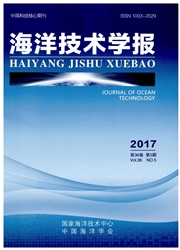

 中文摘要:
中文摘要:
海岸带不同的垂直基准严重地妨碍空间地理数据的集成,垂直基准的统一已是迫切需要解决的任务。分析了我国垂直基准的现状,研究了大地水准面作为统一的垂直基准面的不足与局限性,阐述了选择参考椭球面作为统一的垂直基准面的理由和优点,以及建议在陆地采用大地水准面作为次级的垂直基准表示高程,在海洋采用理论深度基准面作为次级垂直基准表示水深,并采用WGS84参考椭球面进行垂直基准的统一。同时,还给出了陆地高程基准的转换关系和方法,以及海域深度基准的转换关系和归算方法。研究成果将使已有的大量海陆测绘资料得到更好的应用,从而为我国的社会经济、国防和海岸带的可持续发展提供更加强有力的测绘保障。
 英文摘要:
英文摘要:
One of the main obstacles to coastal spatial data integration is different definitions of vertical reference frames, so it is urgent to unify vertical datum. This paper analyzes the status of the vertical datum in China,discusses the defects of using the geoid as unified vertical datum, and expounds the reasons and merits of using the reference spherical surface as unified vertical datum. It is suggested that geoid be used as sub vertical datum to represent elevation on land, the lowest normal low water as sub vertical datum to represent depth in the sea,and WGS84 reference spherical surface be used to unify vertical datum. Meanwhile, this paper presents the conversion relation and method of altitude datum on land, as well as the conversion relation and calculating method of sounding datum in the sea area. The research results will enable substantial existing surveying and mapping data to be better used, thus providing a solid support for China's sustainable socio-economic development, national defence and coastal zone exploitation.
 同期刊论文项目
同期刊论文项目
 同项目期刊论文
同项目期刊论文
 期刊信息
期刊信息
